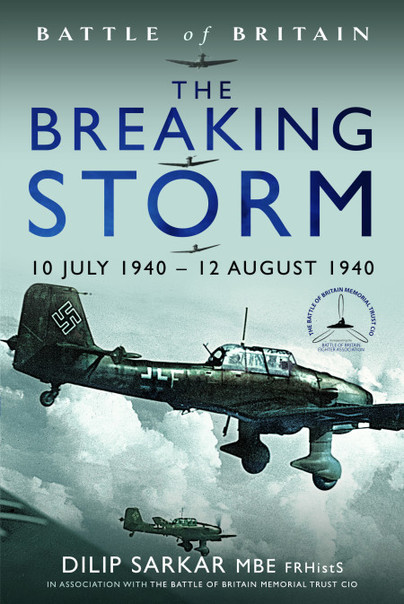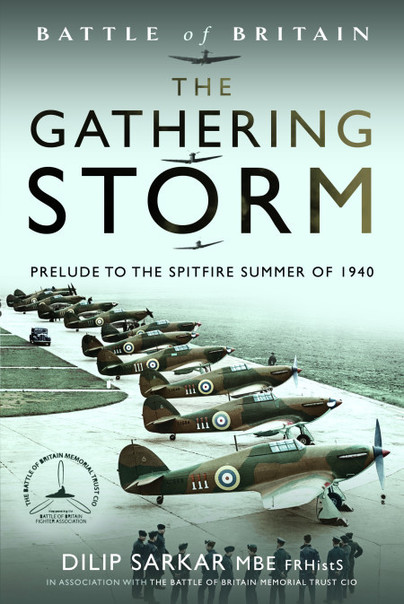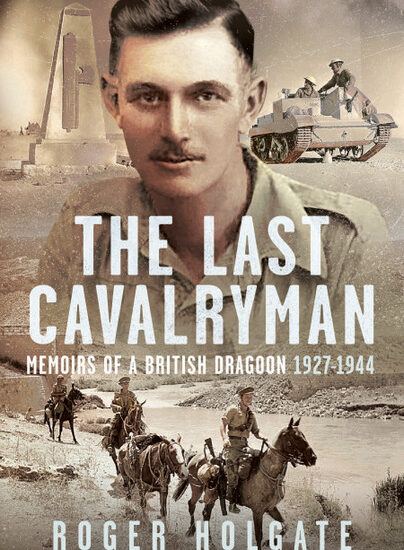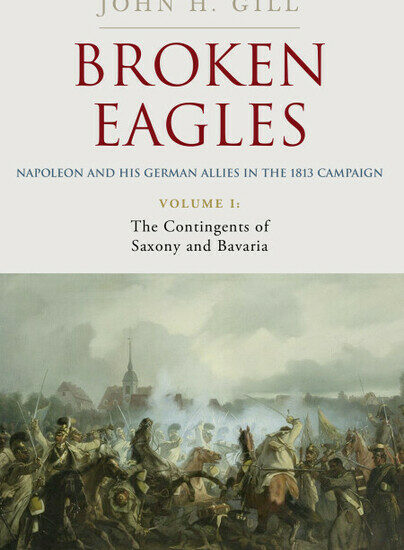Air Chief Marshal Sir Keith Park – Officially One of The Few!
Now the story can be told….

When visiting the Auckland War Memorial Museum in New Zealand during April 2023, I was delighted to see, unexpectedly, the medals and uniform of Air Chief Marshal Sir Keith Park, an Aucklander and, when an Air Vice-Marshal and Air Officer Commanding 11 Group, Fighter Command a primary architect of victory in the Battle of Britain. More than that, Sir Keith had fought with ANZAC forces at Gallipoli in the First Wold War before becoming a pilot and fighter ace, and after the Battle of Britain went on to successfully defend, against overwhelming odds, the George Cross island of Malta. By any standards, Keith Park, who died in Auckland on 6 February 1975, was a hero straight from the pages of the Boys’ Own Paper.


The intriguing thing was that the actual medal group included the coveted Battle of Britain Clasp to the 1939-45 Star, and the Rosette denoting same appeared on his uniform’s medal ribbons… But why, as Keith Park’s name does not appear on any list of the fabled Few?

Who were ‘The Few’?
Essentially, The Few are the aircrew of Fighter Command immortalised by the British Prime Minister, Winston Churchill, in his speech of 20 August 1940:-
‘The gratitude of every home in our Island, in our Empire, and indeed throughout the world, except in the abodes of the guilty, goes out to the British airmen who, undaunted by odds, unwearied in their constant challenge and mortal danger, are turning the tide of the world war by their prowess and by their devotion. Never in the field of human conflict was so much owed by so many to so few’.
Contrary to Churchill’s reference to ‘British airmen’, though, these brave men actually represented a multi-national – albeit exclusively white – force including men from the Commonwealth: Canadians, New Zealanders, Australians, even volunteers from still neutral America, and, of course, free airmen from the occupied lands: Poles, Czechoslovaks, Belgians and Frenchmen.
After the war, it was acknowledged that so significant was Fighter Command’s victory in the Battle of Britain – which prevented the Germans launching their seaborne invasion of southern England – that ‘The Few’ must be officially recognised. An Air Ministry Order (AMO) on 24 May 1945 announced that a Clasp to the 1939-45 Star would be issued for aircrew who had flown in fighters during the Battle of Britain, the official dates of which had been set at 10 July 1940 – 31 October 1940. A further AMO followed on 23 July 1945 confirming this, adding that ‘Issues are to be confined to those who operated with the undermentioned squadrons’ – and went on to list sixty-three RAF fighter squadrons with which a recipient must have served. Over time, up to and including 1960, several more AMOs were issued concerning the units involved, which currently stands at seventy-two.
As a Group Commander, however, Sir Keith had not flown with one of the fighter squadrons or other officially accredited units – so why did his medals include the coveted Clasp? It was, though, widely known that Air Vice-Marshal Park, as he then was, flew himself about 11 Group in his personal Hurricane, ‘OK1’, but nowhere had I ever seen reference, officially or otherwise, to him having made an operational flight during the Battle of Britain.
Now, having personally visited Auckland, there is no doubt in my mind that Air Chief Marshal Sir Keith Park remains New Zealand’s greatest war hero – and rightly so – and, as a Battle of Britain historian, this medal mystery was intriguing indeed. I resolved to get to the bottom of it upon return home.
Gail Romano, the Associate Curator War History, Auckland War Memorial Museum, could offer no explanation regarding the Clasp’s inclusion in Sir Keith’s medal group. Had a mistake been made, I wondered, when the medals were displayed? No, researching post-war photographs clearly showed the great man wearing the Clasp or Rosette, so clearly Sir Keith knew this. Via Gail, I then contacted Stephen Park, Sir Keith’s great-nephew, but the family could shed no light on the mater either, except to say that: –
‘We got to know Uncle Keith quite well as youngsters. While we knew he was something of an air ace and helped lead the air defence of Britain during the Second World War, we were more aware of his personal characteristics, including his strong moral compass. He was driven to do the right thing. During the Battle of Britain, for example, he believed passionately in the British response to the odious Nazi regime and its allies, and was in a position to take the fight to them. At the same time he was acutely aware of the tragic human cost, and we know that to his dying day he grieved for and held dear the memory of “his boys” (as he called his pilots) who died during the Battle of Britain.
‘In later civilian life he directed the same clear-eyed focus on helping his home country and city, especially those less fortunate. He was, fundamentally, an honest operator. There is no way he would have worn the Clasp to the 39-45 Star (as evidenced) unless it had been awarded to him. We are more certain of that than we are of any ambiguity implied because of a lost RAF Officer’s Medal Card’.
The British Air Historical Branch RAF (AHB), however, found no record of the award.
Further intrigued, next stop was the Air Force Museum of New Zealand in Christchurch. Although the Research Curator, Simon Moody, had no explanation either, Simon very helpfully provided an all-important copy of Sir Keith’s flying log book (Form 414). And therein was the essential evidence…
On 10 July 1940 – the Battle of Britain’s official start-date – Sir Keith had recorded in his log having flown in his Hurricane from Northolt on the following sortie: ‘Lympne. Convoy. West Malling’. Now this was the opening of the air battles over Channel-bound convoys, and clearly whilst visiting the coastal airfield of Lympne, on the southern Kentish coast, Sir Keith had seen a convoy out to see and flown over it. Two days later he recorded having flown his famous Hurricane ‘To Kenley to meet PM and escort back to Northolt’.


Clearly, these were operational flights which, to my mind, qualified Sir Keith Park as one of The Few and therefore justified his wearing of the Clasp. The issue, as I saw it, was that as a group commander he had not actually been a member of one of the officially accredited squadrons, or flown with any of them given that he flew himself around 11 Group solo. Be that as it may, further research identified seven station commanders and even a sector controller from Dyce who held the Clasp, having made at least one operational patrol with an accredited squadron on their stations between the relevant dates. It seemed to me, then, that Air Chief Marshal Sir Keith Park must also be included amongst the fabled Few.
On 9 May 2023, the matter was put to the AHB(RAF), which, on 6 July 2023 responded, formally: ‘We agree that AVM Park was a legitimate recipient of the Battle of Britain Clasp because of the sorties he flew. Air Ministry Order (AMO) 532/45 of 24 May 1945 stated under Clasp to the 1939-45 Star: ‘A Clasp to the 1939-45 Star has been instituted for aircrew of fighter aircraft engaged in the Battle of Britain….’.
So, there it was: official acceptance, without argument, that Air Chief Marshal Sir Keith Park was – and is – one of The Few. On 31 July 2023, AHB clarified in writing that until I raised the matter there had been ‘no serious questions over his eligibility’ and that …. ‘The only de facto (Nominal) Roll is contained within the Medal Cards held by the MoD Medals Office, although… the card for AVM Park is unfortunately missing’.
And there we have it: because, as Stephen and Brian Park suspected, of a missing MoD Medal Card the name of Air Chief Marshal Sir Keith Park – a legitimate recipient of the Battle of Britain Clasp – is omitted from the Christopher Foxley-Norris Memorial Wall at The National Memorial to The Few, maintained by the Battle of Britain Memorial Trust, and the Battle of Britain London Monument on Westminster’s iconic Embankment. Certainly, the role of Sir Keith Park in the Battle of Britain is well recorded and well-known – but detail like this is important and now needs putting right.




Stephen and Brian Park, great-nephews of Sir Keith, said: –
‘We are, of course, delighted that our old Uncle Keith has now been formally acknowledged as being one of The Few. While we appreciate that recognition of his vital role during the Battle of Britain secures his place in history anyway, that wasn’t always a certain thing. So, we are very grateful to Dilip Sarkar for alerting the Air Historical Branch to the evidence of why he qualified as one of The Few. We think this matters. When those of us who knew Keith Park personally are no longer around, all that’s left of certainty is his record of service, which speaks for itself to future generations’.
Group Captain Patrick Tootal OBE DL, Hon Secretary of the Battle of Britain Memorial Trust, which maintains the National Memorial to The Few, including the Christopher Foxley-Norris Memorial Wall recording names of The Few, said: –
‘Following research by Dilip Sarkar connected with his eight-volume history for the Battle of Britain Memorial Trust, the Trust has verified Sir Keith Park’s entitlement to the Battle of Britain Clasp. The Trust, in conjunction with the Air Historical Branch, stringently maintains the criteria for entitlement and the evidence provided has shown that Sir Keith completed two operational flights in a fighter aircraft within the defined period of the Battle. Sir Keith Park’s name, therefore, will be added to the database and appear on the Memorial Wall in due course. A bust of Sir Keith Park is already in situ at the National Memorial to the Few at Capel-le Ferne’.
Edward McManus of The Battle of Britain London Monument said: –
‘It has long been accepted that Sir Keith Park’s leadership of 11 Group Fighter Command
was instrumental in securing victory in 1940. This acknowledgment, that he also flew operationally aged 48, can only enhance his reputation and increase our debt to him’.
Gail Romano, Associate Curator War History, at Auckland War Memorial Museum said: –
‘We have never questioned the validity of Sir Keith Park’s Battle of Britain clasp and were surprised when Dilip asked about the provenance. His medal array is as received, since it isn’t Museum practice to modify medals which come into the collection and, having knowledge of Sir Keith’s Second World War significance, we saw no reason to question the clasp. Although these days he is perhaps less well-known to our growing population, many New Zealanders do remember the role he played in the Battle of Britain and later during the siege of Malta. His name is honoured in several public spaces and during the recent unveiling of a new statue of Park, former Defence Minister Ron Mark said, “No other New Zealand-born military figure has had a greater impact on history…” But by all accounts, Sir Keith was not a flamboyant man or one who made a fuss or otherwise courted notice. He was quiet, humble and a true gentleman. Life consistently shows how easy it is to overlook such people. I’m very glad Dilip realised Sir Keith wasn’t officially recognised as one of ‘The Few’ and took on the project to have that omission corrected. He has achieved justice for a man who deserves the respect of official acknowledgement’.
Joe Hill, Curator, Military History at the Battle of Britain Bunker, Uxbridge, said:-
‘I am delighted to see efforts made to formally recognise Air Chief Marshal Sir Keith Park as one of “The Few.”. At the Battle of Britain Bunker we proudly display a large bronze statue of Sir Keith, as well as preserving and displaying the door and brick wall of a property inhabited by him, during the Battle of Britain. Sir Keith directed the Battle from our Operations Room, where Bunker visitors learn about his contribution to the war on our daily tours’.
Dilip Sarkar said: –
From a personal perspective, Keith Park has been a hero of mine since watching the 1969 film Battle of Britain, aged eight, and having since spent a lifetime researching and writing about the 1940 aerial conflict, suffice it to say the satisfaction felt at having proved him to be one of The Few is immense. After the Battle of Britain, Air Chief Marshal Sir Hugh Dowding and Air Vice-Marshal Park were poorly treated by the authorities – which both men remained bitter about until their dying day. Hopefully, this recognition in some small way makes up for that…
Dilip Sarkar MBE FRHistS, 8 August 2023
With thanks to Stephen and Brian Park, Hannah and Peter Tutton, Gail Romano of Auckland War Memorial Museum, Simon Moody of the Air Force Museum of New Zealand, Martin Mace, and Wing Commander Andy Simpson of the Battle of Britain Memorial Trust CIO.
Dilip Sarkar is currently writing the official history of the Battle of Britain for The Battle of Britain Memorial Trust and National Memorial to The Few in eight volumes; Volume 2, Breaking Storm: 10 July 1940 – 12 August 1940, includes reference to Sir Keith Park’s qualifying flights and will be released in September 2023: –

Preorder your copy here.

Volume 1, The Gathering Storm: Prelude to the Spitfire Summer of 1940, is currently available here.
Links: –
Dilip Sarkar’s website.
Auckland War Memorial Museum website.
Air Force Museum of New Zealand website.
MOTAT, Auckland website.
Sir Keith Park Memorial Airfield and Project, Thames, NZ website.
Battle of Britain Memorial Trust CIO website.
Battle of Britain London Monument website.
The Battle of Britain Bunker, Uxbridge (11 Group’s Battle of Britain Operations Room) website.
The Kent Battle of Britain Museum website.
All images Dilip Sarkar Archive.

